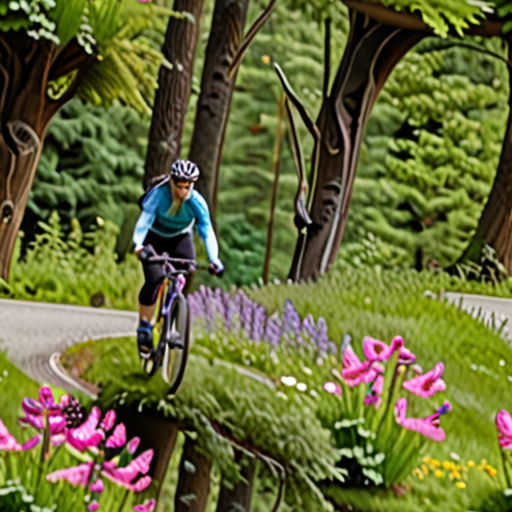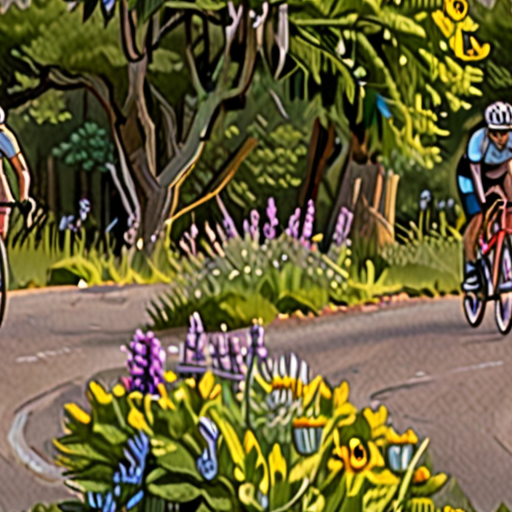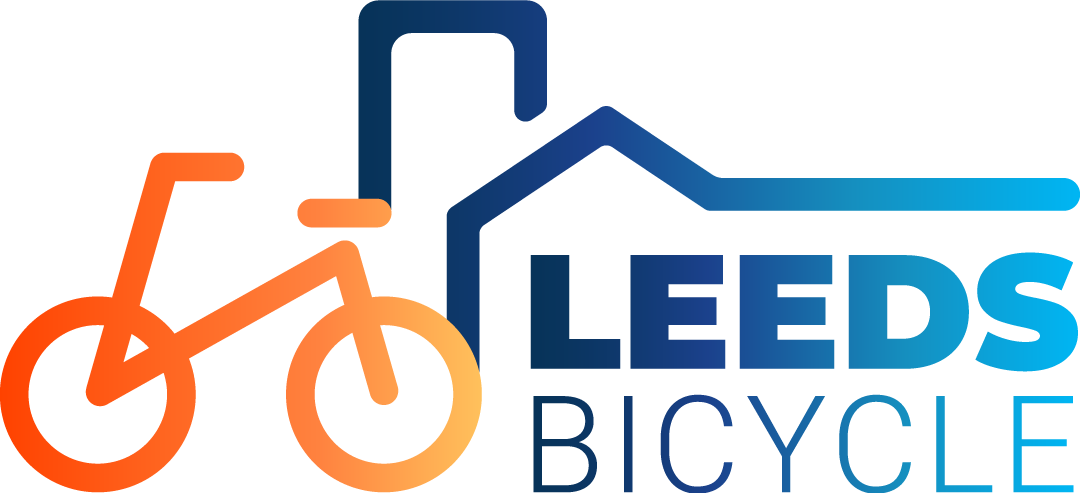As millions of cyclists take to the roads every year, it’s surprising how many riders neglect one of the most critical aspects of their ride: their posture. Poor bike riding posture can lead to discomfort, fatigue, and even long-term health issues, making it essential to understand the importance of getting it right. From understanding the impact of poor posture on overall health to exploring the benefits of cycling for posture improvement, this comprehensive guide will delve into the world of bike riding ergonomics and provide valuable insights into optimizing your posture for maximum comfort and efficiency.

Optimizing Your Posture for Comfortable Bike Riding
To enjoy a smooth ride and minimize fatigue, it’s essential to find the perfect riding position.
- Adjust Your Saddle Height
- Position Your Handlebars Correctly
- Keep Your Back Straight
- Relax Your Shoulders
- Bend Your Knees
- Experiment with Different Positions
The saddle height should allow your leg to almost fully extend when the pedal is in its lowest position. Experiment with different heights until you find a comfortable position.
The handlebars should be at a height that allows you to maintain a straight back and relaxed shoulders. Experiment with different positions until you feel comfortable.
A straight back helps distribute your weight evenly and reduces strain on your neck and shoulders.
Tension in your shoulders can lead to discomfort and fatigue. Make sure to relax your shoulders and keep them down.
Bending your knees slightly helps absorb shock and reduces pressure on your back.
Everyone’s body is unique, so experiment with different positions to find what works best for you.
By adjusting your saddle height, handlebar position, and relaxing your shoulders, you can optimize your posture for comfortable bike riding.
At Leeds Bicycle , we recommend experimenting with different positions to find what works best for you.
For more information on bike maintenance and riding techniques, visit our bike maintenance guide .
Additionally, check out our cycling tips for more advice on how to get the most out of your bike ride.
Is Cycling Good for Your Posture?
Cycling is often considered one of the most effective exercises for improving overall body strength and stability, particularly in the back muscles, hips, shoulders, and spine.
- Regular cycling can strengthen and stabilize the back muscles, which can lead to improved posture and reduced risk of back pain.
- The seated position of cycling allows for a relatively low impact on the joints compared to high-impact activities like running or jumping.
- Cycling also engages the core muscles, which play a crucial role in maintaining good posture and balance.
However, poor cycling posture can still lead to discomfort and pain in the back, neck, and shoulders.
- Leaning forward or hunching over the handlebars can put unnecessary strain on the back muscles and joints.
- Failing to adjust the saddle height or handlebar position can lead to poor posture and discomfort during long rides.
- Ignoring proper bike fit and ergonomics can result in prolonged periods of discomfort and potentially lead to chronic back pain.
To maximize the benefits of cycling for your posture, it’s essential to adopt proper riding techniques and take regular breaks to stretch and move around.
At Leeds Bicycle, we recommend consulting with a professional bike fitter to ensure a proper bike fit and adjusting your riding position accordingly.
Additionally, incorporating stretching exercises into your routine, such as shoulder rolls, chest opens, and hip flexor stretches, can help alleviate tension and promote better posture.
By combining these tips with regular cycling practice, you can enjoy the numerous physical and mental benefits of cycling while maintaining optimal posture and reducing the risk of injury.

Does Bike Riding Flatten Your Stomach?
Bike riding can indeed have a positive impact on your midsection, but the extent to which it flattens your stomach depends on various factors.
- Caloric Burn
- Biking is an excellent cardiovascular exercise that burns calories, helping you shed unwanted pounds and inches around your waistline.
- The number of calories burned during a bike ride depends on several variables, including intensity, duration, and individual metabolism.
- A 30-minute moderate-intensity bike ride can burn approximately 200-300 calories for a 154-pound person.
Core Strengthening
Bike riding engages your core muscles, including your abs, obliques, and lower back, which helps improve overall core strength and stability.
- Engaging Core Muscles
- When pedaling a bike, you engage your abdominal muscles to maintain balance and control.
- This repetitive motion strengthens your core, leading to improved posture, reduced back pain, and a flatter stomach.
Improved Digestion
Bike riding can also promote better digestion and reduce bloating, contributing to a flatter stomach.
- Increased Blood Flow
- Cycling increases blood flow to the digestive system, aiding in nutrient absorption and waste elimination.
- This improved circulation can lead to reduced water retention, decreased bloating, and a slimmer appearance.
Tips for Maximizing Results
To get the most out of bike riding for a flatter stomach, consider the following tips:
- Combine Cardio and Strength Training
- Incorporate strength training exercises that target your core muscles, such as planks, crunches, and leg raises.
- This combination of cardio and strength training will help you achieve a stronger, leaner core and a flatter stomach.
- Ride Regularly
- Maintain a regular bike riding routine to see consistent results and improvements in your overall fitness level.
- Eat a Balanced Diet
- Fuel your body with a balanced diet rich in whole foods, fruits, vegetables, and lean proteins to support weight loss and muscle growth.

The Healthiest Bike Posture
Maintaining a comfortable and efficient riding position is crucial for a safe and enjoyable cycling experience.
- Neutral Spine Alignment
- Shoulder Alignment
- Hand Position
- Foot Position
- Seat Height and Position
Your spine should remain in a neutral position, avoiding excessive curvature or strain.
This can be achieved by keeping your back relaxed and maintaining a straight line between your hips and shoulders.
Avoid adopting the Cat or Cow positions found in yoga, as these may cause discomfort and inefficiency on the bike.
Your shoulders should be relaxed and down, avoiding scrunching or tensing up.
This helps maintain a balanced and stable upper body position, reducing fatigue and discomfort during long rides.
Your hands should be positioned comfortably on the handlebars, with a slight bend in the elbows.
Avoid holding the bars too tightly or loosely, as this can lead to discomfort and fatigue in the arms and shoulders.
Your feet should be positioned comfortably in the pedals, with a slight toe-up angle.
Avoid overstriding or understriding, as this can lead to discomfort and fatigue in the legs and lower back.
Your seat height and position should be adjusted to allow for a slight bend in the knee when the pedal is in its lowest position.
Avoid sitting too far forward or backward, as this can lead to discomfort and fatigue in the back and legs.
By maintaining a neutral spine alignment, shoulder alignment, hand position, foot position, and seat height and position, you can achieve a comfortable and efficient riding position that reduces fatigue and discomfort during long rides.
Remember to adjust your position regularly to accommodate changes in terrain, speed, and comfort level.
For more information on bike fit and adjustment, visit our bike fit and adjustment guide .
Additionally, consider consulting with a professional bike fitter to ensure a precise and customized fit for your unique needs and preferences.
At Leeds Bicycle, we offer a range of bikes and accessories designed to promote comfort and efficiency on the road.
Visit our website to explore our selection of bikes and learn more about our commitment to providing high-quality products and exceptional customer service.
Leeds Bicycle
Mastering the Perfect Bike Riding Posture for Comfort and Performance
As a cyclist, having the right bike riding posture is crucial for reducing discomfort and improving performance. By making a few simple adjustments, you can optimize your ride and enjoy a smoother, more enjoyable experience.
- Adjust Your Saddle Height: Make sure your saddle height is correct to prevent putting unnecessary strain on your knees and lower back. A general rule of thumb is to have a slight bend in your knee when the pedal is in its lowest position.
- Relax Your Shoulders: Keep your shoulders relaxed and down, avoiding any tension that can lead to discomfort and fatigue. Imagine a string pulling your head up towards the ceiling to help maintain good posture.
- Engage Your Core: Engage your core muscles to support your lower back and maintain good posture. This will help you stay balanced and stable while riding.
- Bend Your Elbows: Keep your elbows slightly bent to absorb any bumps and vibrations from the road. This will help reduce fatigue and discomfort in your arms and hands.
- Look Ahead: Keep your eyes focused on the horizon, looking ahead rather than down at the road. This will help you stay balanced and avoid any obstacles.
By incorporating these adjustments into your bike riding posture, you can reduce discomfort and improve performance. Remember to take regular breaks to stretch and rest your muscles, and consider consulting with a professional fitter to ensure your bike is properly set up for your body.
Tips for Improving Your Bike Riding Posture
- Practice Regularly: Practice makes perfect, so try to ride regularly to develop good habits and muscle memory.
- Listen to Your Body: Pay attention to any discomfort or pain you may be experiencing, and adjust your posture accordingly.
- Stay Hydrated: Stay hydrated and fueled to maintain energy levels and avoid fatigue.
- Get Enough Rest: Get enough rest and recovery time to allow your muscles to repair and rebuild.
Additional Resources
For more information on bike riding posture and how to improve your performance, check out our bike maintenance tips and cycling tips and advice sections.

Optimizing Your Bike Riding Technique for Maximum Comfort and Efficiency
To achieve optimal comfort and efficiency while bike riding, it’s essential to master the correct bike riding posture.
- Bike Saddle Height: Adjust the saddle height to allow your leg to almost fully extend when the pedal is in its lowest position. This ensures that your knee remains slightly bent, reducing strain on your legs and lower back.
- Handlebar Position: Experiment with different handlebar positions to find a comfortable spot that allows you to maintain a straight back and relaxed shoulders. A slight drop in the handlebars can help reduce strain on your neck and shoulders.
- Seatpost Angle: Ensure the seatpost is angled correctly to promote a comfortable riding position. A slight tilt forward can help alleviate pressure on your back and improve pedaling efficiency.
- Footwear: Wear properly fitting shoes with stiff soles to enhance pedaling efficiency and prevent foot fatigue.
- Body Positioning: Maintain a balanced body position by keeping your weight centered over the bike, with your knees in line with the pedals and your hands on the handlebars.
By implementing these adjustments, you’ll be able to optimize your bike riding technique, reducing discomfort and increasing efficiency on every ride.
Additional Tips for Enhanced Comfort and Efficiency
- Regular Maintenance: Regularly check and maintain your bike’s tire pressure, brakes, and chain to ensure smooth operation and prevent mechanical issues.
- Cycling Techniques: Practice various cycling techniques, such as cadence training and hill climbing, to improve your overall fitness and efficiency.
- Riding Style: Develop a smooth and efficient riding style by focusing on gentle pedaling, relaxed upper body positioning, and controlled braking.
Conclusion
By incorporating these adjustments and tips into your bike riding routine, you’ll be well on your way to achieving maximum comfort and efficiency on every ride. Remember to stay flexible, adapt to changing conditions, and continually work towards improving your technique to maximize your cycling experience.

0 Comments